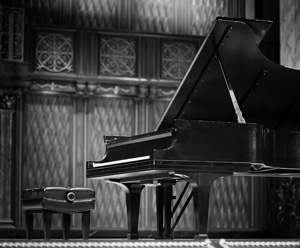 Do you know that the grand piano has been with us since the 16th century? Bartolomeo Cristofori invented it after he had decided to experiment with the harpsichord. He wanted to create an instrument that could play music in a more expressive manner. He wanted something better than a harpsichord, which strikes notes by plucking strings with quills. It was Cristofori who devised the hammer mechanism in grand pianos, a feature that allowed the musician to control the tempo and the beat of his tunes.
Do you know that the grand piano has been with us since the 16th century? Bartolomeo Cristofori invented it after he had decided to experiment with the harpsichord. He wanted to create an instrument that could play music in a more expressive manner. He wanted something better than a harpsichord, which strikes notes by plucking strings with quills. It was Cristofori who devised the hammer mechanism in grand pianos, a feature that allowed the musician to control the tempo and the beat of his tunes.
Cristofori’s grand piano is not much different in sound and appearance as the harpsichord. But because of the hammer mechanism he integrated into his instrument, there is a musician’s touch response to the music. This means the music produced by the instrument can be altered by the way that the keys are pressed. Fast and slow music is produced by changing the player’s velocity in pressing the piano keys.
It was in the 17th century that Cristofori’s grand piano designs became published. The first commercial builder of such an instrument was Gottfried Silbermann along with help from his two music students Johannes Zumpe and Christian Friederici. The grand piano was approved as a new musical instrument in 1747 by J.S. Bach. It is only after that time when musical pieces specifically created for the piano were written.
Over time, the grand piano has evolved very slowly from how it looked originally to how it appears today. The English version of this instrument is heavier and more complex compared to the original one created in Germany. The German version of the grand piano is most similar to the Viennese version, which is the same type that Beethoven and Mozart used in composing the classical piano pieces that made them both famous.
The mass production of grand pianos didn’t start until 1800?s. And by 1821, the modern standard for the keynote actions of the grand piano were fully developed. It became the official standard of the grand – the same standard that is used today.



